Do you feel like a broken lock has compromised your security? Are you unsure how to navigate the process of repairing and replacing it? With household burglaries rising, now is an important time to ensure our homes are safely secured.
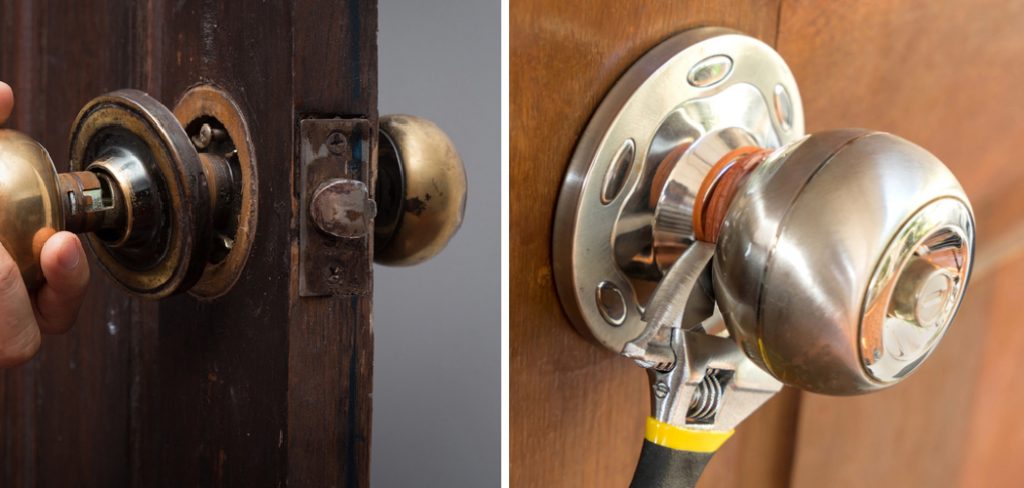
If you are dealing with a broken lock, the first thing to do is accurately identify the problem. Deadbolts that are stuck or misaligned, keys that are hard to turn, or doors that won’t lock can all be signs of a broken lock.
In this blog post, we will walk through the steps of how to fix a broken lock so that you can restore your home’s safety and keep intruders out. So don’t worry–you’re not alone! We’ll provide easy guidance so that even beginners can repair their locks without hassle.
What Will You Need?
First, look at some of the tools and materials you will need to repair your broken lock. Depending on the type of lock installed, different items may be necessary for a successful fix.
- Screwdriver
- Lock lubricant
- Door hinges
- Lock replacement kit (if needed)
Once you have gathered your supplies, it’s time to start repairing!
10 Easy Steps on How to Fix a Broken Lock
Step 1: Check the Alignment
The first step in fixing a broken lock is to check the alignment. This involves making sure that all components of the lock are properly positioned and functioning correctly. If you find any misalignment, use a screwdriver to adjust them until they are back in place.
Step 2: Check the Hinges
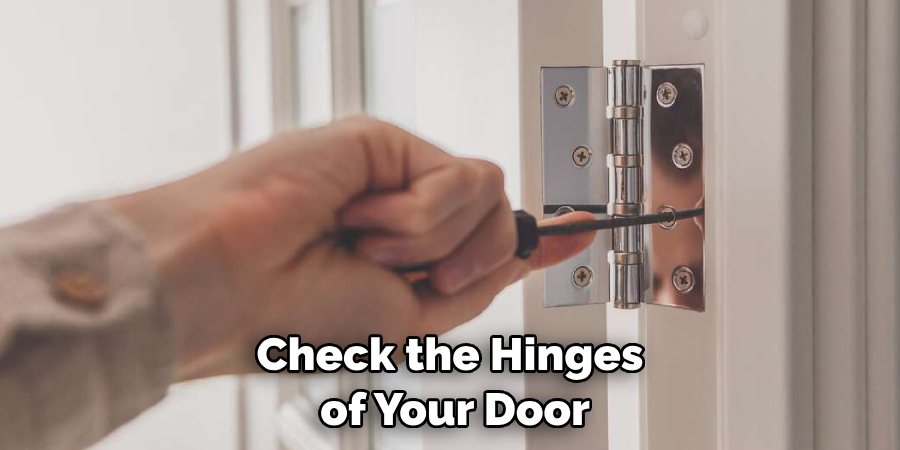
Next, you’ll want to check the hinges of your door. If they are loose or worn out, you may need to replace them to get your lock functioning properly. Ensure that there is no debris in the hinges and that they are screwed in tightly.
Step 3: Apply Lock Lubricant
When your lock is difficult to turn or the key won’t insert smoothly, your lock might be dry and needs lubrication. Apply a generous amount of lock lubricant to the keyhole. Turn the key several times to distribute the lubricant evenly inside the lock mechanism.
Remember to wipe any excess lubricant off the door to prevent staining. If the problem persists after lubrication, it may be a sign of a more serious issue that could require replacement.
Step 4: Replace the Cylinder
If the lock still doesn’t function properly after lubrication, the problem might be with the lock cylinder. To replace the cylinder, unscrew and remove the lock’s faceplate inside your door. Pull the cylinder out from the outside. Insert the new cylinder into the lock, ensuring it’s the same size and type as your old one. Replace the faceplate and test the new lock with your key.
Step 5: Reassemble the Lock
After replacing the cylinder, it’s time to reassemble your lock. Insert the lock back into the door’s hole, and ensure it’s properly aligned with the keyhole. Tighten the screws on the inside of the door to secure the lock in place.
Make sure to check the functionality of the lock with your key. If it turns smoothly and locks securely, you have successfully fixed your broken lock! If you need help, you may need to seek professional help.
Step 6: Test the Lock
Once you’ve successfully reassembled the lock, it’s time to put it to the test. Lock and unlock the door several times, checking for smooth operation. Pay close attention to how the key turns and whether the deadbolt extends and retracts fully.
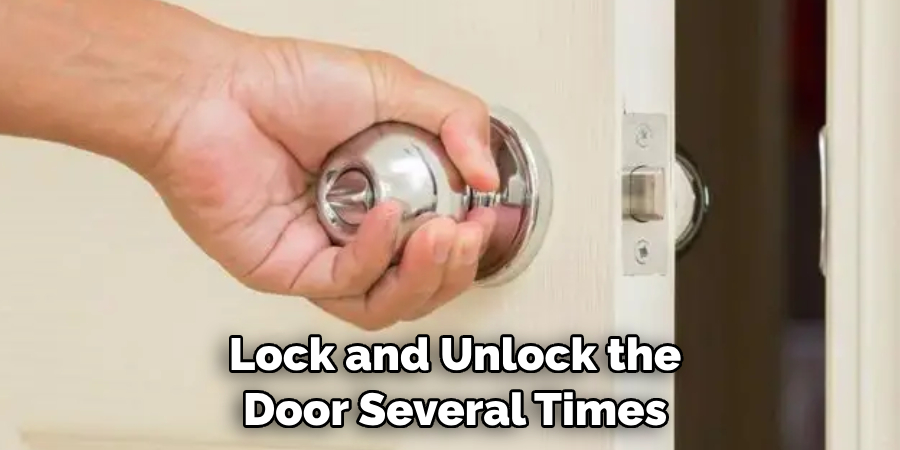
If the lock operates smoothly, you can be confident that you’ve successfully fixed the broken lock. If you still need to, you may need to examine and adjust the internal components again or consider hiring a professional locksmith.
Step 7: Consider a Lock Replacement
If your lock still isn’t functioning properly after all these steps, consider a full lock replacement. Depending on the severity of the damage to your current lock, a direct replacement may be the safest option.
Lock replacement kits with detailed installation instructions are widely available at any home improvement store. Be sure to choose a lock with security features that meet your home’s needs. After installation, test the new lock to ensure it operates smoothly.
Step 8: Regular Maintenance
Regular maintenance is key to ensuring its longevity and performance now that you’ve either fixed or replaced your lock. This could involve periodically lubricating the lock mechanism to keep it operating smoothly.
Also, remember to check the screws on your door hinges and lock faceplate to ensure they’re tight. If you notice the lock starting to act up again, don’t wait for it to break. Address the issue promptly to maintain your home’s security.
Step 9: Seek Professional Help If Needed
If you’ve followed all the steps above and your lock is still not functioning correctly, it might be time to consult with a professional locksmith. While it can be rewarding to fix issues around your home by yourself, locks are a critical part of your home’s security and sometimes require the expertise of a professional.
A qualified locksmith can diagnose and repair more complex problems, ensuring your lock operates smoothly and provides the security you need.
Step 10: Review and Monitor
Regular review and monitoring is the final step in this process. Check your lock periodically to ensure it’s still functioning correctly. Use your key to lock and unlock the door regularly, keeping an eye out for any signs of a problem, such as difficulty turning the key or a sticking deadbolt. Keeping a close eye on your lock’s performance will allow you to identify and resolve any potential issues before they become major problems, helping keep your home secure.
By following these simple steps, you can have peace of mind knowing your home’s locks are functioning properly and keeping you secure.
5 Additional Tips and Tricks
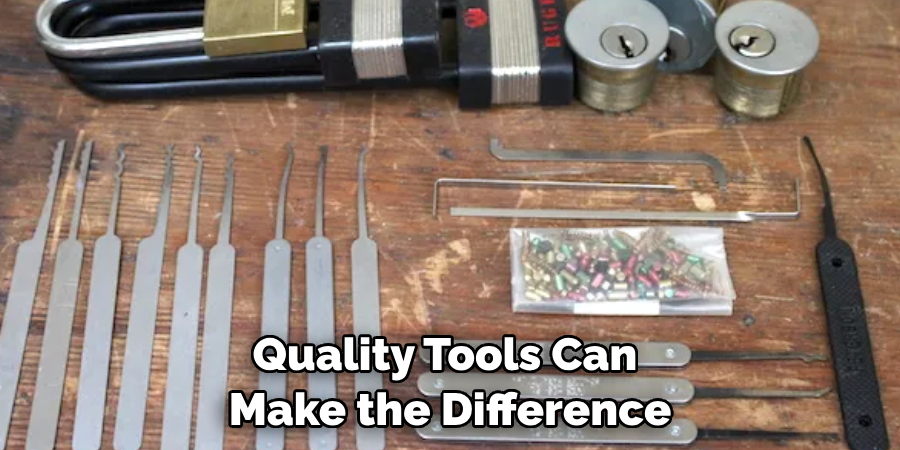
- Invest in Quality Tools: Quality tools can make the difference between a quick fix and further damaging your lock. Make sure you have a good screwdriver, pliers, and locksmith tweezers.
- Do Not Force It: If the key is stuck or the lock is jammed, resist the temptation to force it. Excessive force can compound the problem, potentially damaging the lock beyond repair.
- Lubricate Your Locks Regularly: A bit of lubrication can go a long way in maintaining the smooth operation of your locks. Use graphite-based lubricants designed specifically for locks.
- Consider a Temporary Fix: If you don’t have the right tools or the lock is severely damaged, consider a temporary fix like a padlock or a door brace to secure your property until professional help arrives.
- When in Doubt, Call a Pro: If the lock still gives you trouble after your best DIY efforts, it may be time to call a professional locksmith. They have the tools and expertise to handle a wide range of lock-related issues.
These tips and tricks in dealing with a broken lock can help you ensure security and avoid further damage to your property. Patience and precision are key when dealing with intricate devices like locks.
5 Things You Should Avoid
- Avoid Using Improper Tools: It’s tempting to use whatever is handy when trying to fix a lock, but this can lead to more harm than good. Always use the right tools for the task.
- Avoid Ignoring Early Warning Signs: If your lock is becoming increasingly difficult to turn or your key is getting stuck, don’t ignore these signs. It’s best to address the problem before the lock breaks completely.
- Avoid DIY if You’re Unsure: Locks are complex mechanisms. If you need more confidence in your ability to fix the lock, it’s best to leave it to a professional.
- Avoid Delaying Professional Help: If the lock is critical to your home’s security, don’t delay in calling a professional locksmith. The longer you wait, the more at risk your property may become.
- Avoid Neglecting Regular Maintenance: Regular cleaning and lubrication can prevent many lock problems. Pay attention to these simple maintenance tasks.
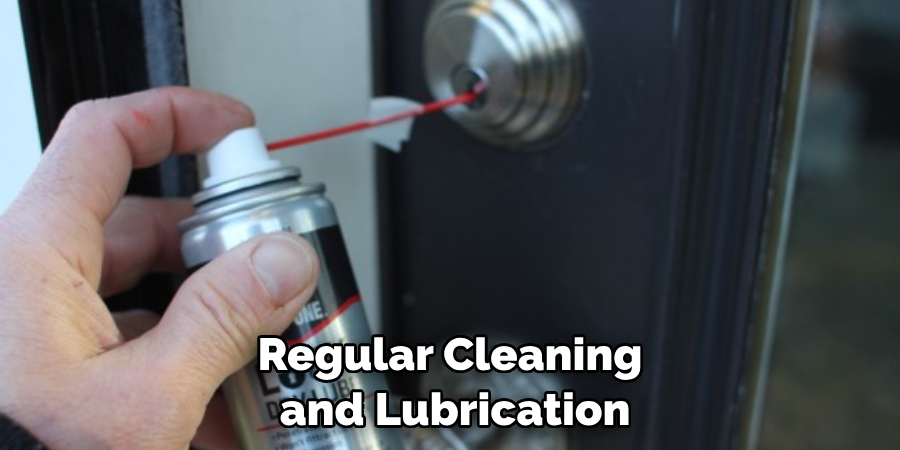
By avoiding these common mistakes, you can significantly increase your locks’ lifespan and ensure your property’s security.
How Do You Lock a Door When Your Lock is Broken?
If your lock is broken or damaged, securing the door using a temporary solution is best. Here are three tips to consider when locking a door with a broken lock:
- Use a Padlock: A quality padlock can provide an effective and temporary solution for securing your property until professional help arrives. Ensure the padlock is of good quality and not easily picked or broken.
- Secure the Door With a Brace: If you don’t have a padlock on hand, you can also use a door brace to secure your property. Consider installing an additional security bar if needed.
- Replace the Lock ASAP: Once professional help arrives, get the lock replaced as soon as possible. This will ensure your property is safe and secure.
Taking the above steps when dealing with a broken lock can help you ensure security and prevent further damage to your property. It’s important to be prepared for unexpected situations like these, so make sure you have the right tools, and don’t hesitate to call a professional locksmith when needed.
Conclusion
In the end, how to fix a broken lock is not something you should be afraid of doing. With patience and perseverance, and after following the steps outlined in this blog post, you should be able to mend a broken lock expertly.
By now, you are confident enough to go off and fix that broken lock yourself! If however, despite your best efforts, it seems impossible to fix the lock or you don’t feel comfortable with this type of work – don’t worry and don’t hesitate to reach out for help. Professional locksmiths will surely come in handy when dealing with a lockout situation or more difficult cases where the locking mechanism might need extra work or replacement parts.
So, if you ever face this problem again –you know what to do. With clear guidelines on fixing a broken lock combined with sound advice about when it is best to call for professional assistance -you are sure to conquer any lockout challenges!
About
Safety Fic is a distinguished figure in the world of Diy design, with a decade of expertise creating innovative and sustainable Diy solutions. His professional focus lies in merging traditional craftsmanship with modern manufacturing techniques, fostering designs that are both practical and environmentally conscious. As the author of diy, Safety Fic delves into the art and science of Safety Fic-making, inspiring artisans and industry professionals alike.
Education RMIT University
(Melbourne, Australia) Associate Degree in Design (Safety Fic) Focus on sustainable design, industry-driven projects, and practical craftsmanship. Gained hands-on experience with traditional and digital manufacturing tools, such as CAD and CNC software.
Nottingham Trent University
(United Kingdom) Bachelor’s in diyfastly.com and Product Design (Honors) Specialized in product design with a focus on blending creativity with production techniques. Participated in industry projects, working with companies like John Lewis and Vitsoe to gain real-world insights.
Publications and Impact
In diy, Safety Fic his insights on indoor design processes, materials, and strategies for efficient production. His writing bridges the gap between artisan knowledge and modern industry needs, making it a must-read for both budding designers and seasoned professionals.
